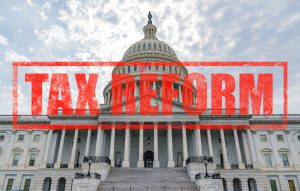 Get the most from your vacation home rental property by knowing the tax rules
Get the most from your vacation home rental property by knowing the tax rules
Summer is the time of family vacations, sun, sand and beaches. It’s also the time when a vacation home may be used to generate additional cash flow through rental.
Part-time landlords need to remember that, in many cases, the Internal Revenue Service expects them to report the extra income.
Short-Term Rentals
In general, if a taxpayer rents their vacation home for fewer than 14 days out of the year, the income is tax free and the property is considered a personal residence. Under this scenario, taxpayers are not required to report any rental income on their tax return. However, expenses attributable to the rental cannot be deducted, such as cleaning fees or rental commissions.
More than 14 Rental Days
If a taxpayer’s rental days are above the 14-day threshold, the income is required to be reported. Under this scenario, a taxpayer can also deduct a variety of direct rental expenses such as licenses, advertising and rental commissions.
Other expenses such as repairs, mortgage interest, property taxes and utilities are deductible on a prorated basis based upon the number of days a taxpayer rented the home out.
Claiming Expenses on Rental Property
When filing taxes on a rental property, an individual will use IRS Schedule E: Supplemental Income and Loss. The IRS provides an extensive listing of deductions in Publication 527, however common expenses include:
- Real Estate/Property Taxes
- Insurance
- Cleaning
- Repairs and Maintenance
- Depreciation
- Legal and Professional Fees
- Advertising
- Utilities
- Commissions
We’ve got your back
For additional information on the taxability of your vacation home rental, contact Simon Filip, the Real Estate Tax Guy, at sfilip@krscpas.com or (201) 655-7411.

 Get the most from your vacation home rental property by knowing the tax rules
Get the most from your vacation home rental property by knowing the tax rules An unincorporated business jointly owned by a married couple is generally classified as a partnership for federal tax purposes. However, in 2007, there was an addition to the Internal Revenue Code that excludes from partnership status a Qualified Joint Venture (“QJV”) conducted by a married couple who file a joint return. This was enacted by Congress to alleviate what was considered an unnecessary burden of filing partnership returns where the only members of a business joint venture are a husband and wife filing a joint income tax return.
An unincorporated business jointly owned by a married couple is generally classified as a partnership for federal tax purposes. However, in 2007, there was an addition to the Internal Revenue Code that excludes from partnership status a Qualified Joint Venture (“QJV”) conducted by a married couple who file a joint return. This was enacted by Congress to alleviate what was considered an unnecessary burden of filing partnership returns where the only members of a business joint venture are a husband and wife filing a joint income tax return.
 The Tax Cut and Jobs Act (TCJA) was signed into law on December 22, 2017, and took effect on January 1, 2018. Included in the political promise of tax simplicity and historically large tax cuts to middle-income households were amendments to existing tax code, including
The Tax Cut and Jobs Act (TCJA) was signed into law on December 22, 2017, and took effect on January 1, 2018. Included in the political promise of tax simplicity and historically large tax cuts to middle-income households were amendments to existing tax code, including  Tax Cuts and Jobs Act (“TCJA”)
Tax Cuts and Jobs Act (“TCJA”) A passive loss from a real estate activity occurs when your rental property’s expenses exceeds its income. The undesirable consequence of passive losses is that a taxpayer is only allowed to claim a certain amount of losses on their tax return each year.
A passive loss from a real estate activity occurs when your rental property’s expenses exceeds its income. The undesirable consequence of passive losses is that a taxpayer is only allowed to claim a certain amount of losses on their tax return each year. One of the most valuable assets a taxpayer will ever sell is their personal residence. Under
One of the most valuable assets a taxpayer will ever sell is their personal residence. Under 
 If a taxpayer fails to qualify as a real estate professional, losses from rental activities may still be deductible. While real estate professionals are afforded beneficial tax treatment enabling them to deduct losses from their real estate activities, real estate nonprofessionals taxpayers may still benefit.
If a taxpayer fails to qualify as a real estate professional, losses from rental activities may still be deductible. While real estate professionals are afforded beneficial tax treatment enabling them to deduct losses from their real estate activities, real estate nonprofessionals taxpayers may still benefit.